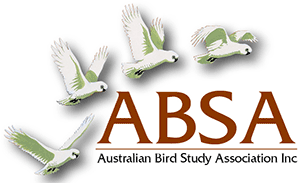Morphological sexing of Grey-crowned Babblers Pomatostomus temporalis temporalis: near enough is not quite good enough
| Posted: |
29/11/2015 |
| Author(s): |
Caroline Blackmore, Kathryn Teare Ada Lambert |
We investigated sexual dimorphism in Grey-crowned Babblers
(Pomatostomus temporalis temporalis) focusing on whether morphological measurements can be used as a means to sex individuals in the field. Head-bill length, body mass and wing length data from two separate studies were analysed for sex differences and to determine whether Grey-crowned Babblers differed morphologically between populations. Head-bill length was found to be the most sexually dimorphic measurement. Males were larger in all age classes (excluding first-year birds), although there was some overlap in the range of measurements obtained for males and females. Body mass and wing length showed no significant differences and substantial overlap between the sexes. The best model from a Discriminant Function Analysis found that 87.1 percent of Grey-crowned Babblers could be correctly sexed using head-bill length as a measurement. Size differences between the two study populations were not significant, but as geographic variation in size has been documented in this species we recommend new models be developed for each location, where cost or time constraints preclude definitive molecular-based sexing.
>> Download Abstract |
File Size: 309KB
>> Download Complete PDF | File Size: 101kB
